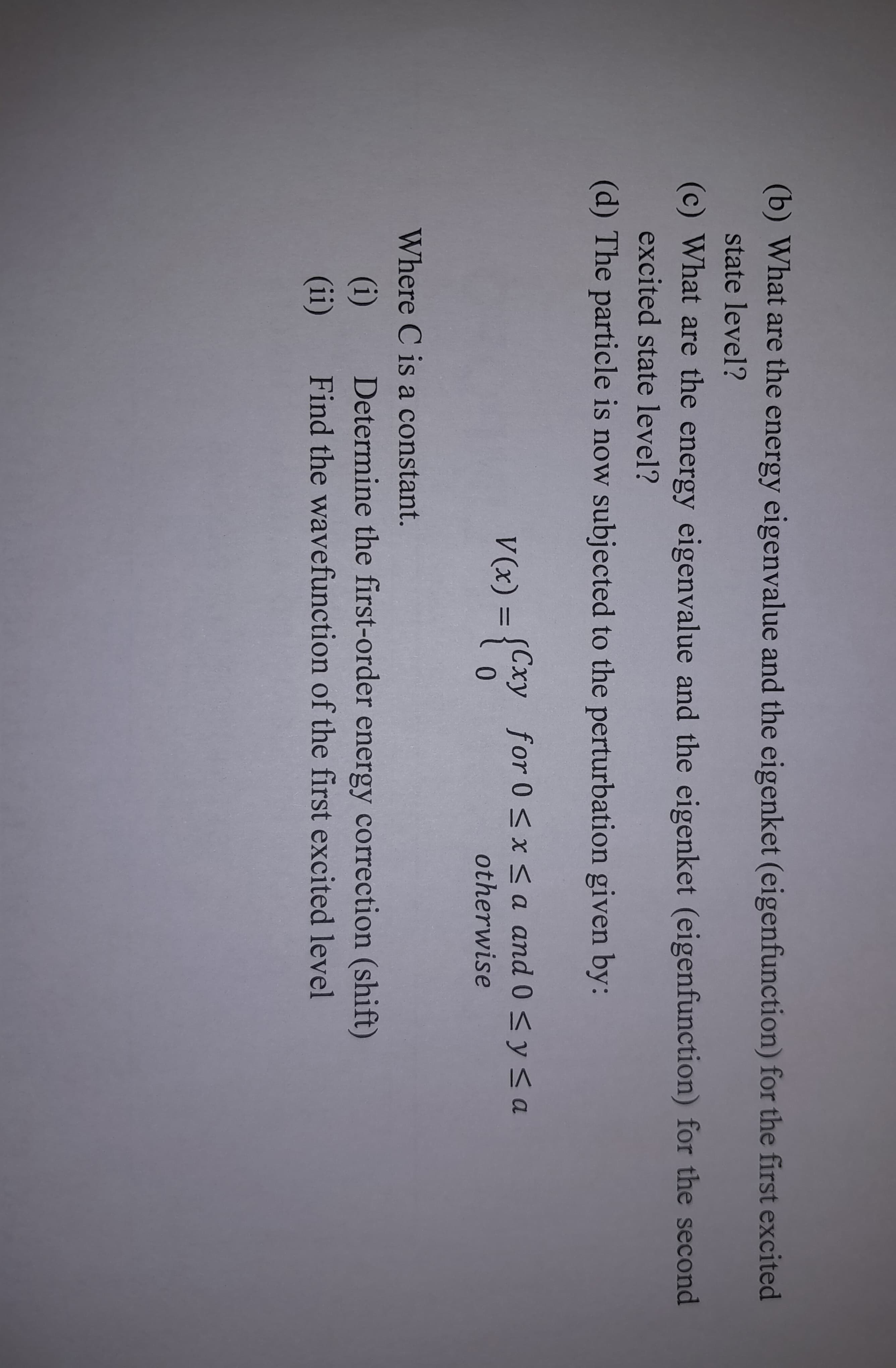2. Consider a particle in a 2-dimensional infinite square well given by: V(x) = {0 for 0≤x≤a and 0 ≤ y ≤a otherwise (a) What are the energy eigenvalue and the eigenket (eigenfunction) for the non- degenerate level? (b) What are the energy eigenvalue and the eigenket (eigenfunction) for the first excited state level? (c) What are the energy eigenvalue and the eigenket (eigenfunction) for the second excited state level? (d) The particle is now subjected to the perturbation given by: V(x) = {Cxy for 0≤x≤a and 0 ≤ y ≤ a 0 otherwise Where C is a constant. (i) Determine the first-order energy correction (shift) (ii) Find the wavefunction of the first excited level
2. Consider a particle in a 2-dimensional infinite square well given by: V(x) = {0 for 0≤x≤a and 0 ≤ y ≤a otherwise (a) What are the energy eigenvalue and the eigenket (eigenfunction) for the non- degenerate level? (b) What are the energy eigenvalue and the eigenket (eigenfunction) for the first excited state level? (c) What are the energy eigenvalue and the eigenket (eigenfunction) for the second excited state level? (d) The particle is now subjected to the perturbation given by: V(x) = {Cxy for 0≤x≤a and 0 ≤ y ≤ a 0 otherwise Where C is a constant. (i) Determine the first-order energy correction (shift) (ii) Find the wavefunction of the first excited level
Related questions
Question
100%

Transcribed Image Text:2. Consider a particle in a 2-dimensional infinite square well given by:
V(x) = {0 for 0≤x≤a and 0 ≤ y ≤a
otherwise
(a) What are the energy eigenvalue and the eigenket (eigenfunction) for the non-
degenerate level?

Transcribed Image Text:(b) What are the energy eigenvalue and the eigenket (eigenfunction) for the first excited
state level?
(c) What are the energy eigenvalue and the eigenket (eigenfunction) for the second
excited state level?
(d) The particle is now subjected to the perturbation given by:
V(x) = {Cxy for 0≤x≤a and 0 ≤ y ≤ a
0
otherwise
Where C is a constant.
(i) Determine the first-order energy correction (shift)
(ii) Find the wavefunction of the first excited level
Expert Solution
This question has been solved!
Explore an expertly crafted, step-by-step solution for a thorough understanding of key concepts.
Step by step
Solved in 1 steps with 5 images
